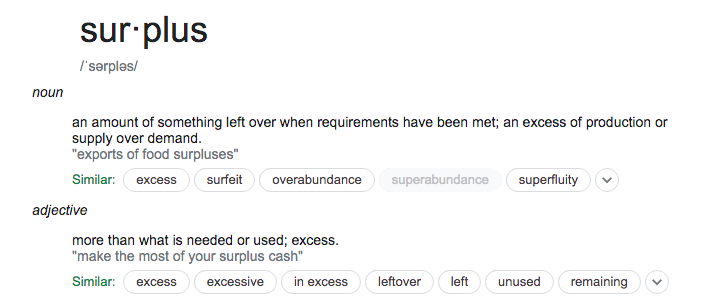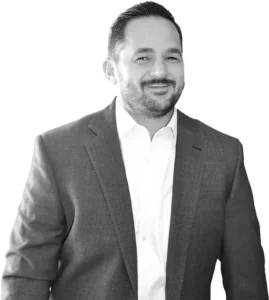No Bite Left Behind
Growing up, there was a well-known rule around our house – you eat all the food on your plate, every last bite. You don’t leave the dinner table until you’ve finished what you served yourself.
My dad grew up the oldest of 6 kids with a single mother that worked full-time. They often went without and had to learn to be grateful and creative with what they had. I remember overhearing my aunts and uncles tell this story of when there was only one can left in the cabinet, and it had no label. The six hungry mouths looked on as the eldest used the can opener to reveal the surprise of what was inside – garbanzo beans. They had fried garbanzo bean pancakes that night – they were grateful for what they had and finished every last bite.
I could tell you about the time that my dad made me macaroni and cheese and substituted milk for hazelnut coffee creamer or about the time I sat at the dinner table for an hour pouting because I couldn’t finish my salad, which I eventually flushed down the toilet (shhh, don’t tell my dad).
When we went out to eat, my dad never ordered a meal but rather just finished what my siblings and I left behind. This was our family culture. You eat every last bite, no surplus.
My dad grew up well acquainted with deficits, and for this reason, he always had a great appreciation for what we had and always sought to stretch out our “haves” to maximize utility.
Surplus Plus Plus Plus…

Source: Google
As much as we wish it did, often life just doesn’t balance – we live in a world of too much or too little, where Goldilocks’ “just right” is oh so rare. My dad grew up in a family that didn’t always have enough, and many of us live lives where there is often more than needed. Deficits and surpluses surround us. We regularly hear about the deficits in government spending, and we watch reality television that flaunts all the surpluses of our society.
Today on TOM, I’d like to discuss the surpluses that surround financial planning and how a prudent investor can manage these surpluses wisely.
A Cash Flow Surplus
A surplus in cash flow can be problematic.
Alternatively, when one has more income than expenses, it can be difficult to decide what exactly to do with the leftovers.
Here at The Bahnsen Group, one of the core strategies we implement is a dividend growth strategy. Many of our clients love this philosophy and its mechanics because it generates a predictable and sustainable income. BUT, beyond these benefits, perhaps one of the greatest arguments for the validity of this strategy is that dividends are, in fact, a great use of “leftovers” (profits).
Think about it, when a company has a surplus of revenue – revenue above and beyond expenses (profits) – that company’s leadership team has to decide what exactly to do with those profits. They could: pay down debt, pay a dividend, buy back shares, re-invest back into the company (e.g., CapEx), or make an acquisition. Those are the five choices they have. Countless researchers have followed the impact of these different allocation decisions and concluded that paying a dividend does bode well for the company and its stock price. Paying a dividend is a very shareholder-friendly decision. A dividend is a vote of confidence from leadership about the business prospects that they know best.
Savers (you and I) are also left with a similar decision to make, what to do with the profits on our own personal income statement. Your wages, your distributions from the business, your rental income, or whatever other income sources you have are greater than your living expenses. It would be best if you decided where you should allocate that surplus. You could pay down debt, you could invest in yourself (education, certifications, etc.), you could invest/save, you could buy new toys, you could give it away to charity, and the list goes on.
Ultimately there is a decision to be made, and it is a difficult one; it takes planning. You can’t easily off-the-cuff figure out where is the optimal place to set aside these leftovers. Unfortunately, most people don’t dedicate much thought to this process and just conclude that tomorrow will take care of tomorrow. So, they do what feels right at the moment. Questions like, “Can I afford this?” become extremely dangerous because often the answer is technically yes, but leads one to make a tradeoff of a small benefit today with a sacrifice of a larger unrealized future benefit.
I myself am not immune to this issue. When I have leftovers, I feel like they are burning a hole in my pocket and that money must be allocated – these funds must be saved or spent. I’ve found that when saving is really vague, and I don’t feel very compelled to do so. To combat this reality, I am very specific about what I am saving for. I save for our kids’ college (529), I save for our future retirement (401(k), IRAs, etc.), I save into our giving account (DAF), I save for our future medical expenditures (HSA), I save for a future home purchase, I save into an emergency fund, and so forth. Each of these different earmarked accounts has its own time horizon, which helps define what type of investments are most appropriate for that allocation. Additionally, my wife and I have a priority list across these different objectives, highlighting where surpluses are allocated first.
If we didn’t have this system in place, I know what would happen. I would look at my account and be shocked at the extras that have built up, and I’d buy a new toy – a mountain bike, a new car, plan an extravagant vacation, etc. These are not inherently bad things to acquire, but they need to be prioritized and contextualized concerning my plan, my goals, and the aspirations my wife and I have for our family. These are planning decisions, decisions that deserve time and thought.
I will say it again, a surplus in cash flow can be problematic. As Uncle Ben counseled Peter Parker (Spiderman), “With great power comes great responsibility,” and I will tell you, “With great surplus also comes great responsibility.”
A Balance Sheet Surplus
It isn’t easy to recognize a surplus on your balance sheet. Measuring if one has “enough” can be a difficult task.
Many people are good at simple mental math – they could easily tell you how much to tip on your dinner bill, or they could quickly convert the mileage of a trip to an estimated drive time.
Mostly no one is good at computing complex solutions in their head. Like trying to decipher if a 5 million dollar portfolio will last a lifetime for a retiree – factoring in taxes, volatility, inflation, liquidity needs, etc., makes this exponentially more difficult.
We need heuristics and other back-of-the-napkin shortcuts to help us conceptualize complex equations. For example, you often hear people discuss US debt being north of 20 trillion dollars. The word trillion easily rolls off the tongue, but it is so difficult to fathom how much money that exactly is. For our brains, we are just swapping letters of the alphabet – from a million to a billion, we replace an “m” with a “b,” and similarly, from a billion to a trillion, we swap the “b” for a “t” – these minor spelling adjustments seem small and innocent. In reality, though, if a hundred trillion one-dollar bills were stacked on top of one another, this pile would stretch to the moon and back… 14 TIMES!! A trillion is a BIG number, a much bigger number than a billion or a million.
I would encourage you to review your balance sheet with your advisor to determine if, indeed, there is a surplus based on your financial plan and expected expenses. The balance sheet should always be viewed through the lens of living expenses and be measured as a multiple of expense. If one spends $100,000 a year and has a $2 million balance sheet, we can assume that they have 20x their expenses saved.
Knowing that a common financial planning heuristic is the “4% rule,” meaning that withdrawing 4% from a portfolio creates a high likelihood of not outliving your finances means we can use this as an anchor point for measuring “enough.” To reverse engineer the arithmetic here, we could divide our expenses by 4%. Perhaps an easier computation for mental math would be to just multiple your expenses by 25 (the reciprocal of 1/25 or 4%).
Obviously, we can’t stop there, as there are other variables and considerations, BUT when you multiply your expenses by 25, what figure do you get? Is your balance sheet currently larger than 25x your expenses? If so, you might have a surplus.
Most savers won’t take the time to decipher whether they do indeed have a surplus, and for those that do, sometimes this reality can be paralyzing. The question of what to do with a surplus can feel overwhelming. This is true for individuals and companies alike. One of the largest phone manufacturers in the world has enough cash on its balance sheet that their cash alone would rank as one of the largest 50 companies (by market capitalization) in the United States. This CEO is burdened by what to do with these surpluses – not an easy task. Again, what to do when there is too much is not as simple as it may seem. The objectives begin to shift from a focus on survival to a focus on legacy.
I can’t help you solve your surplus dilemma in this article, but I can encourage you to start a conversation with your advisor, as this is a very planning-centric question. From charitable aspirations to family vacation homes, this planning may lead you in many different directions.
What We Learned Today
Let’s recap.
Life is full of surpluses and deficits.
A surplus in cash flow can be problematic, as it often slips through our fingers without us even realizing it. A surplus on the balance sheet can be paralyzing, as we don’t always know exactly what to do with it: both good problems to have and both deserving of much thought, planning, and weighing of options.
Again, a Goldilocks situation – having just enough – will not be the norm, which means most of us will have to do some planning around what to do with our own surpluses.
That planning won’t be tackled today here on Thoughts On Money, but rather I’ve just introduced the concept and made you aware of your responsibilities. Like we said, “With great surplus also comes great responsibility.”
Now, you know your marching orders, so off to planning…







